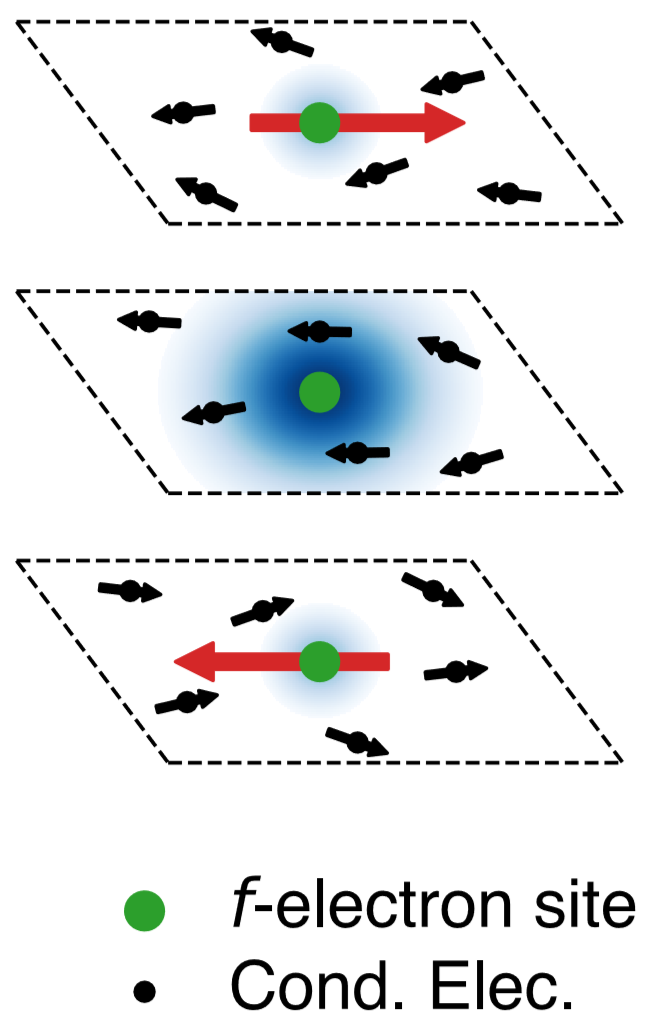Superconductivity, and other desirable properties, can arise (or be greatly enhanced) at the interface between two different materials. Electronic textures emerge spontaneously in bulk materials due to competing atomic-scale interactions, from which functional interfaces can arise. The control of these electronic textures would enable a top-down approach for designing new generations of devices. An international team of researchers has used high-resolution neutron spectroscopy on LET to probe the prototypical strongly correlated metal CeRhIn5, revealing competition between magnetic frustration and easy-axis anisotropy—a well-established mechanism for generating spontaneous superstructures. The resulting self-assembling interfaces have major advantages; they are intrinsically clean, and relevant parameters such as the interface thickness can be tuned in-situ via external parameters such as magnetic field or temperature. Their work demonstrates that strongly-correlated electron materials are a promising route to producing tunable and emergent heterostructures, the basis for applications in adaptive electronics.
 A spontaneously emerging interface in a quantum material is shown. In the top and bottom layers the atoms carry a magnetic moment (red arrow) that points in opposing directions. The center layer is akin to an electronic interface, in which the atoms do not carry magnetic moments because they are screened by the magnetic moments of the surrounding electrons (black arrows).
A spontaneously emerging interface in a quantum material is shown. In the top and bottom layers the atoms carry a magnetic moment (red arrow) that points in opposing directions. The center layer is akin to an electronic interface, in which the atoms do not carry magnetic moments because they are screened by the magnetic moments of the surrounding electrons (black arrows).
Related publication: D. M. Fobes et al. “Tunable emergent heterostructures in a prototypical correlated metal" Nature Physics 14(2018), 456-460, DOI: 10.1038/s41567-018-0060-9
